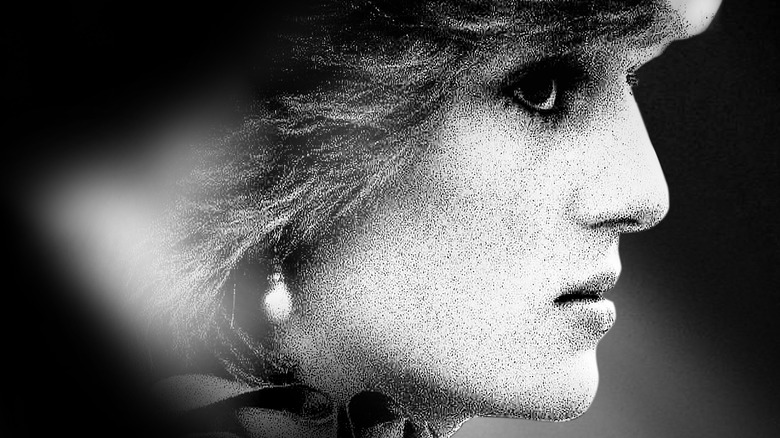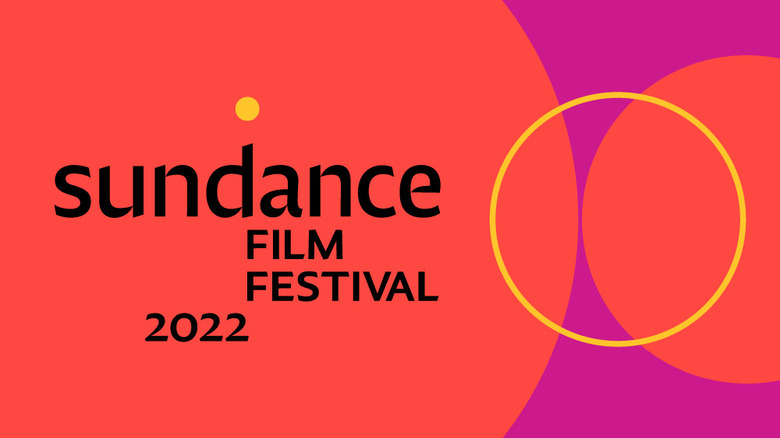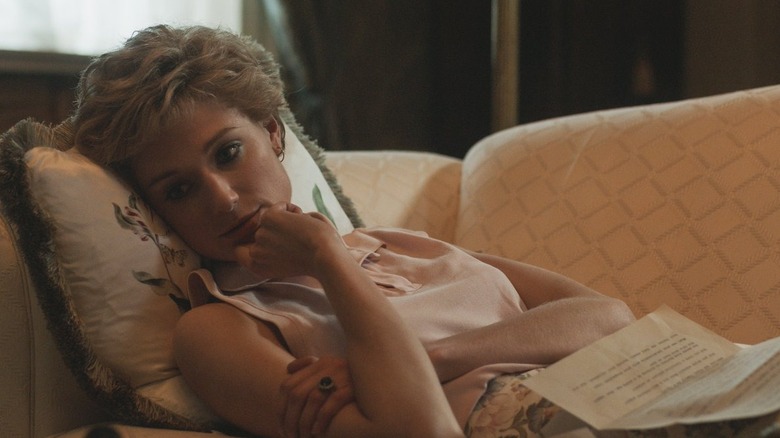The Princess Review: The Tragic Princess Diana Story Is Retold Yet Again [Sundance 2022]
Will we ever be able to let go of Princess Diana? Nearly 25 years after her tragic death, the former Princess of Wales remains in the spotlight. There's a rather dreadful musical about her life that you can watch on Netflix. On that same streaming service, you can watch Emma Corrin play Diana on "The Crown" — and Elizabeth Debicki will be stepping into the same role in an upcoming season. Kristen Stewart has garnered some of the best reviews of her career for playing Diana in last year's "Spencer." Again and again, the story is told and re-told. And it's always the same: Diana, despite coming from privilege and wealth, was still an outcast to the Royal Family she married into. She was destined to be Queen someday, but her marriage to Prince Charles was loveless, and the two separated and later divorced. The paparazzi hounded her wherever she went. And she died tragically, killed in a car accident at the age of 36. You likely know all of this, if not from watching one of the many pieces of Diana-based entertainment then via cultural osmosis. It's become ingrained into our collective consciousness.
Diana's story is worth telling — but how much more is there to say at this point? Is there anything left to be revealed? Or will we forever be recounting the same story, perhaps hoping that in doing so we'll absolve ourselves of whatever lingering guilt remains? We as a society hungry for that fabled thing called "content" craved constant coverage of Diana in life — and that ultimately helped contribute to her death. If anyone learned a teachable lesson from that tragic passing, it's long since been forgotten. We continue to hunger for that coverage even though she's no longer with us. Perhaps we're all trying to figure out who Diana really was. Our knowledge of her remains secondhand; culled together via actor portrayals, paparazzi photos, and old interviews. She is a ghost, gazing out at us from a TV screen with haunting blue eyes and a sly smile. Who was she?
With "The Princess," director Ed Perkins compiles a staggering amount of archival footage to recreate Diana's story from her whirlwind courtship with Charles all the way through her lavish funeral procession. There are no on-screen text titles explaining things. No new interviews with talking heads. No narration (although Perkins cleverly uses the archival voices of unseen TV personalities of the time to move things along). This is meant to be Diana's story without noticeable editorializing. Perkins' work here is solid; the story moves along at a steady clip, creating a near-Shakespearian tragedy of a misunderstood princess doomed to die young. But when Diana's coffin drives off towards its final resting place, we remain the dark and at a distance. Perhaps that's what Perkins is ultimately attempting to say here: no matter how much footage we pull together, we can never really get close enough to Diana. She remains a shade, a spirit, a slightly blurry image in low-definition. She has become almost as mythical and fictional as a figure from folklore.
Fairytale Romance
"The Princess" begins just at the start of Diana and Charles' relationship. Right from the jump, we see Diana hounded by the press — they walk right up to her, invading her space, pummeling her with questions. The media wants to portray this as a "fairytale romance," because that's the type of lazy, cheap connection that sells headlines. But it's abundantly clear that Charles and Diana aren't engaged in some great love affair. In one of their first joint interviews as a couple, a reporter asks: "What do you have a common?" There's a moment of unbearable silence between the two before Charles lamely comments: "That's a difficult question."
Things only get worse from there. There's a genuinely jaw-dropping moment after the engagement announcement where another reporter comments that Diana's father and uncle have both "vouched for her virginity." Yet another journalist states that while the press is in a fervor about the impending nuptials they'll likely "lay off" once the wedding is over. Of course, that doesn't happen – the coverage only increases as Diana becomes a full-blown superstar. She's not like the rest of the royals, who are perceived as cold and aloof; keepers of ancient, archaic traditions. Diana is good with people; she has what they call the "common touch." She is beautiful, and young, and seemingly normal, making the Windsors appear even more icy and alien. And that doesn't sit well with them — Charles in particular seems flummoxed that everyone wants to ignore him and pay attention to his wife now instead.
As this unfolds, Perkins intercuts contemporary interviews and news segments. An endless parade of talk shows discusses Diana, and opinions vary over time. Some think Diana's pleas for privacy are all a ruse; that she actually likes the attention. It's ghoulish to watch these interviews now; to listen as people who seemingly lack even an ounce of empathy decry Diana for bringing her troubles on herself. Late in the film, when paparazzi photos leak of Diana kissing boyfriend Dodi Fayed, a photographer laughs off the notion that she didn't know her photo was being taken. In still another scene, photographers stalk Diana through an airport, literally shoving the lenses of their cameras up against her head. She hides behind a tennis racket in a leather case. A photographer asks her to reveal her face. When she says no, we can hear the photographer literally whine "Pllllleeeeeeease," like a child begging for something sweet before dinner. It's sickening stuff. As is a moment where paparazzi, using cameras with cartoonishly huge lenses, try to get pics of Diana skiing with her children and mock and decry her for not giving them the poses they want as if she were simply there to perform for them and nothing else.
All of this goes a long way towards hammering home how hounded Diana was. There's also a pleasant irony in the fact that Perkins is repurposing lots of film footage shot by the paparazzi to paint them as the grubby creeps they apparently were. But it also keeps Diana at a distance — so much of the footage here is of Diana from far away, moving in and out of buildings, her eyes diverted. This all contributes to the feeling that the filmmaker can never really give us the real Diana.
History
Since everything here is archival, Perkins has to find ways to get creative, cutting between footage of Diana, people on the streets, and even footage of the Royal Family at different times. The announcement that Charles and Diana are separating arrives intercut with footage of the 1992 Windsor Castle fire, a rather heavy-handed way of implying that the Diana-Charles relationship has sent the whole monarchy up in flames.
After the separation, a whole new wave of emotions surrounding Diana flooded the public. We see some commenting that she's brave to stand up for herself and break away, while others claim her actions are selfish and they're going to destroy the Royal Family. One pundit goes as far as to spit out the bilious accusation that Diana is "very close to being a monster." At the same time, "The Princess" does a good job of conveying that this post-separation period was a good time for Diana. Finally detached from the royals, she is able to be herself and devote her time to charitable causes. But these brief moments of seeming happiness are, of course, bittersweet.
The clock is ticking, and Diana is not long for this world. The aftermath of her death triggers a kind of mass hysteria; people clog the streets with flowers and become so overcome with grief that they have to be carried away. Perkins intercuts an interview with Christopher Hitchens at the time decrying the public's grief and claiming that everyone is essentially out of their minds for sobbing over someone they never really knew.
Hitchens' words are cruel and needlessly nasty, but his words have some truth — otherwise, Perkins likely wouldn't have included them. While there is no shame in feeling sadness at Diana's young death, she was and is a stranger. She was very good at that "common touch" thing, and that made her seem more knowable than the other royals. But we can never truly know the "real" Diana, and this ultimately keeps "The Princess" from ever elevating itself. It's a handsomely constructed, often addictive documentary – but it's also repeating the same story we've been told again and again. Diana belongs to history now, and that is where she'll always remain. Perhaps it's time we left her there, in peace.
/Film Rating: 7 out of 10


